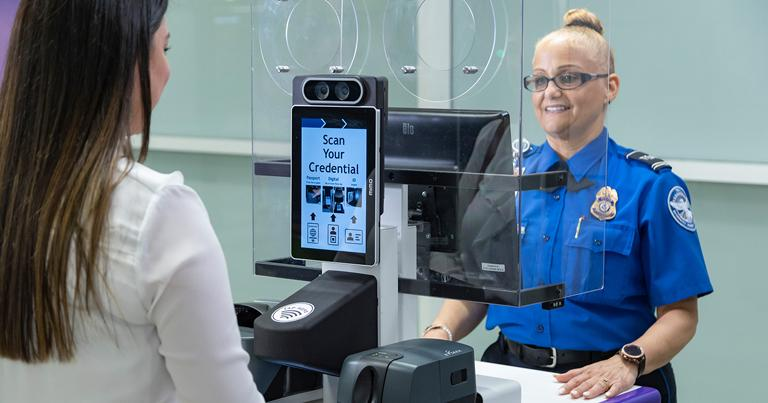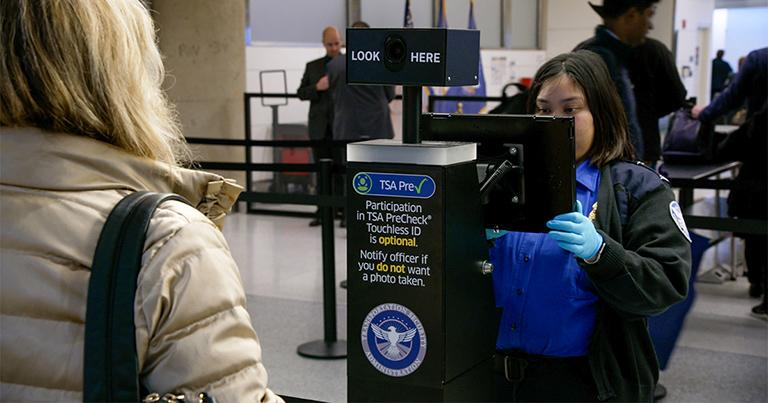American Airlines has recently launched a new touchless ID technology at several major airports across the United States. This innovative system aims to speed up passenger processing while enhancing security and safety, especially in a world that increasingly values contactless experiences. The introduction of touchless ID marks a significant step forward in the travel industry’s efforts to modernize airport checkpoints and improve traveler convenience.
What is Touchless ID Technology?

Touchless ID technology allows passengers to verify their identity without physically handing over documents or touching shared surfaces. Using biometric data such as facial recognition, the system matches travelers’ faces with their government-issued identification stored securely in a digital format. This eliminates the need for manual document checks by TSA officers or airline staff.
The process is fast, safe, and hygienic. Instead of fumbling with boarding passes or ID cards, travelers simply step in front of a camera, and the system confirms their identity instantly. This helps reduce waiting times and crowds at security checkpoints.
Where is Touchless ID Available?
American Airlines has rolled out this technology at several major airports, including Dallas/Fort Worth International Airport (DFW), Chicago O’Hare International Airport (ORD), and Los Angeles International Airport (LAX). Plans are underway to expand the system to more locations nationwide.
By implementing touchless ID at these busy hubs, American Airlines hopes to set a new standard in passenger processing and encourage other airlines and airports to follow suit.
Benefits of Touchless ID for Travelers
For passengers, the touchless ID system offers many clear advantages:
- Faster Processing: Passengers spend less time waiting in line since biometric verification is much quicker than traditional document checks.
- Enhanced Safety: Reducing physical contact at checkpoints helps lower the risk of spreading germs and viruses, which is especially important in the post-pandemic travel environment.
- Improved Accuracy: The technology reduces human errors that can occur during manual ID verification, helping ensure that only authorized passengers board flights.
- Convenience: No need to carry physical documents or worry about losing boarding passes.
How Does Touchless ID Work?
When passengers arrive at the airport, they opt-in to use the touchless ID system. They approach a kiosk or checkpoint equipped with cameras and biometric sensors. The system captures an image of the passenger’s face and compares it to the digital ID on file. Once verified, the traveler is allowed to proceed through security or boarding without additional ID checks.
All biometric data is encrypted and stored securely, complying with strict privacy and security standards set by government agencies. Passengers can also choose to opt out if they prefer traditional ID checks.
Impact on Airport Operations
For American Airlines and airport authorities, the introduction of touchless ID helps improve operational efficiency. Shorter lines and faster processing mean more passengers can be served without the need for additional staff or resources.
Additionally, the system supports social distancing by limiting close contact between passengers and security personnel. This aligns with ongoing public health guidelines and traveler expectations for safer air travel.
Collaboration with TSA and Technology Partners
American Airlines worked closely with the Transportation Security Administration (TSA) and leading technology providers to implement the touchless ID system. This collaboration ensures that the technology meets federal security requirements while delivering a seamless experience for passengers.
The TSA has been actively supporting the use of biometrics at airports nationwide as part of its innovation efforts. American Airlines’ adoption of touchless ID is seen as a major milestone in this broader movement towards biometric screening.
Future of Biometric Travel at American Airlines

The launch of touchless ID is just the beginning. American Airlines plans to integrate biometric technology into other parts of the travel journey, such as baggage check-in and boarding gates, creating a fully touchless airport experience.
With advancements in AI and machine learning, the accuracy and speed of biometric verification will continue to improve, making air travel more efficient and secure than ever before.
Traveler Reactions and Industry Response
Many passengers have welcomed the introduction of touchless ID, appreciating the speed and convenience it offers. Early adopters at DFW and ORD airports have reported smoother security experiences and less stress during travel.
Industry experts see American Airlines’ move as a key driver for innovation across the airline sector. Other carriers are expected to adopt similar technologies soon to stay competitive and meet evolving passenger demands.
Challenges and Privacy Concerns
Despite its benefits, touchless ID technology has raised some concerns related to privacy and data security. Some travelers worry about how their biometric data is stored and used. American Airlines has addressed these issues by ensuring strict compliance with privacy laws and transparency about data handling.
Passengers are also given control over their participation, maintaining the option to use traditional ID methods if they prefer.
Conclusion: A New Standard in Air Travel
American Airlines’ introduction of touchless ID at major airports represents a significant step toward a more modern, efficient, and safe travel experience. By embracing biometric technology, the airline is helping shape the future of air travel, where speed, security, and hygiene go hand in hand.
Passengers flying with American Airlines can expect faster check-ins, less physical contact, and a smoother journey from start to finish. As more airports adopt touchless ID, travelers worldwide will benefit from this innovation.
For more updates on airport technology and travel innovations, visit American Airlines official website and TSA Biometric Programs.
Also Read – Google Drive’s New AI Feature ‘Catch Me Up’ Simplifies Document Tracking





